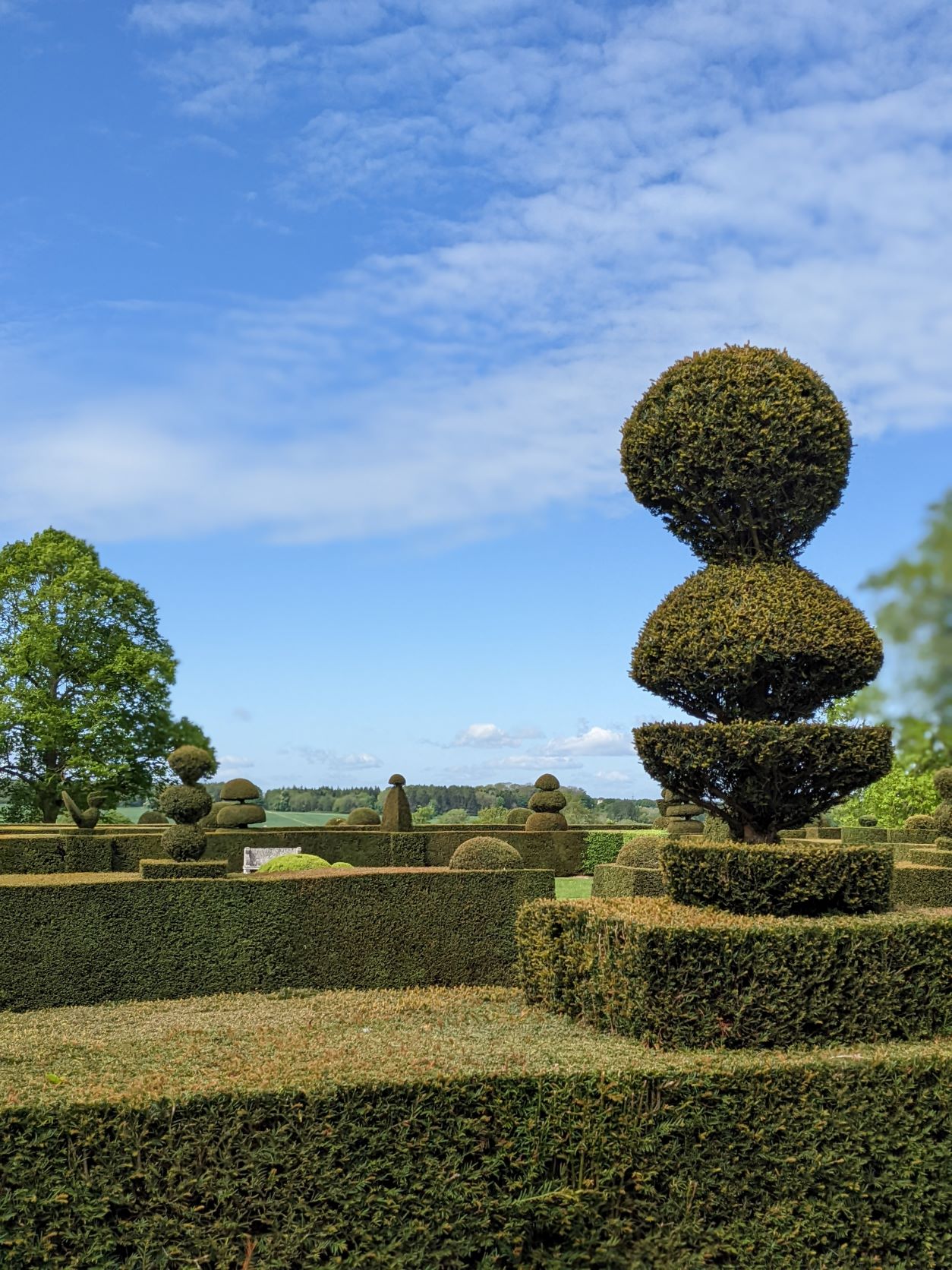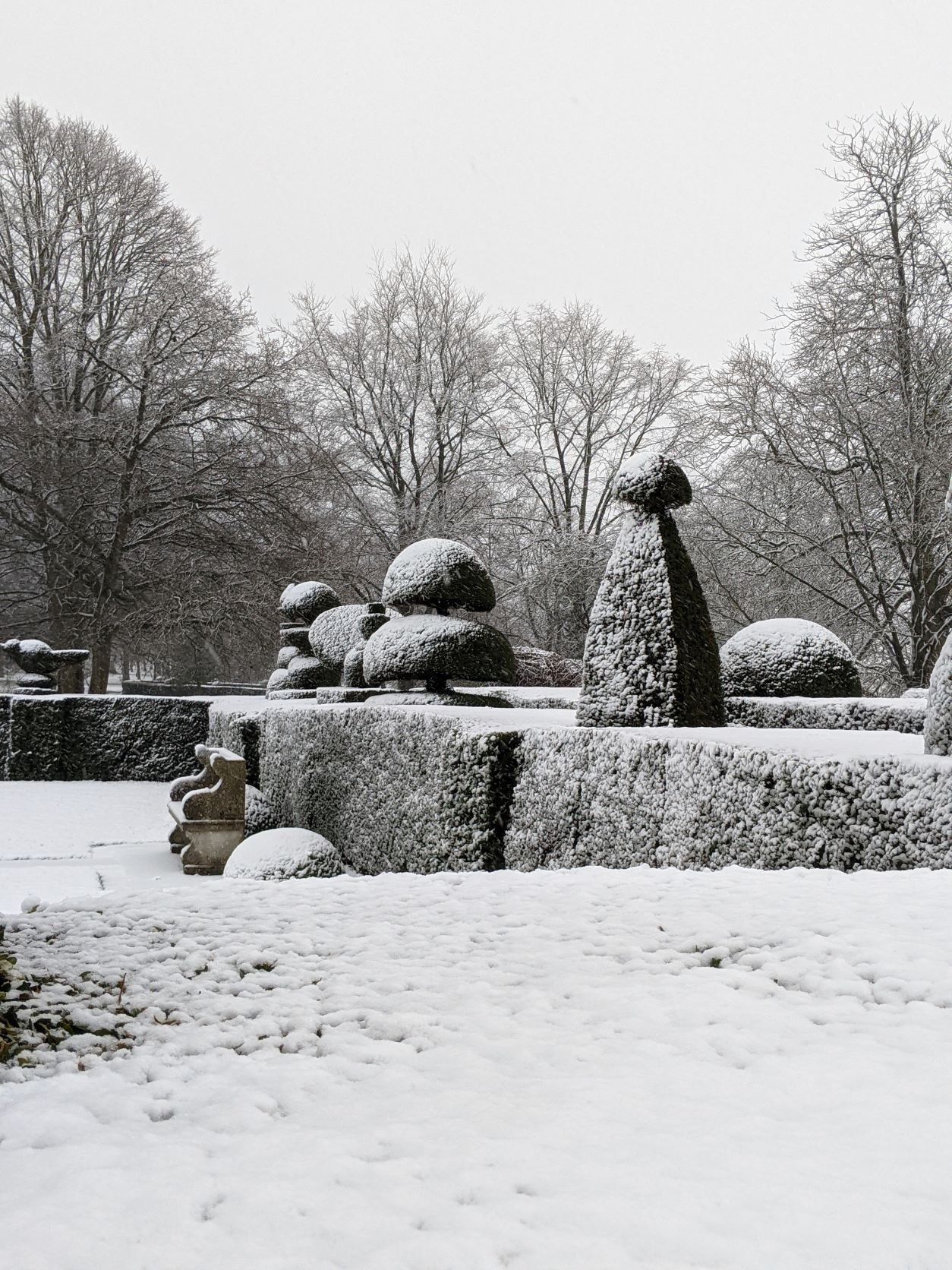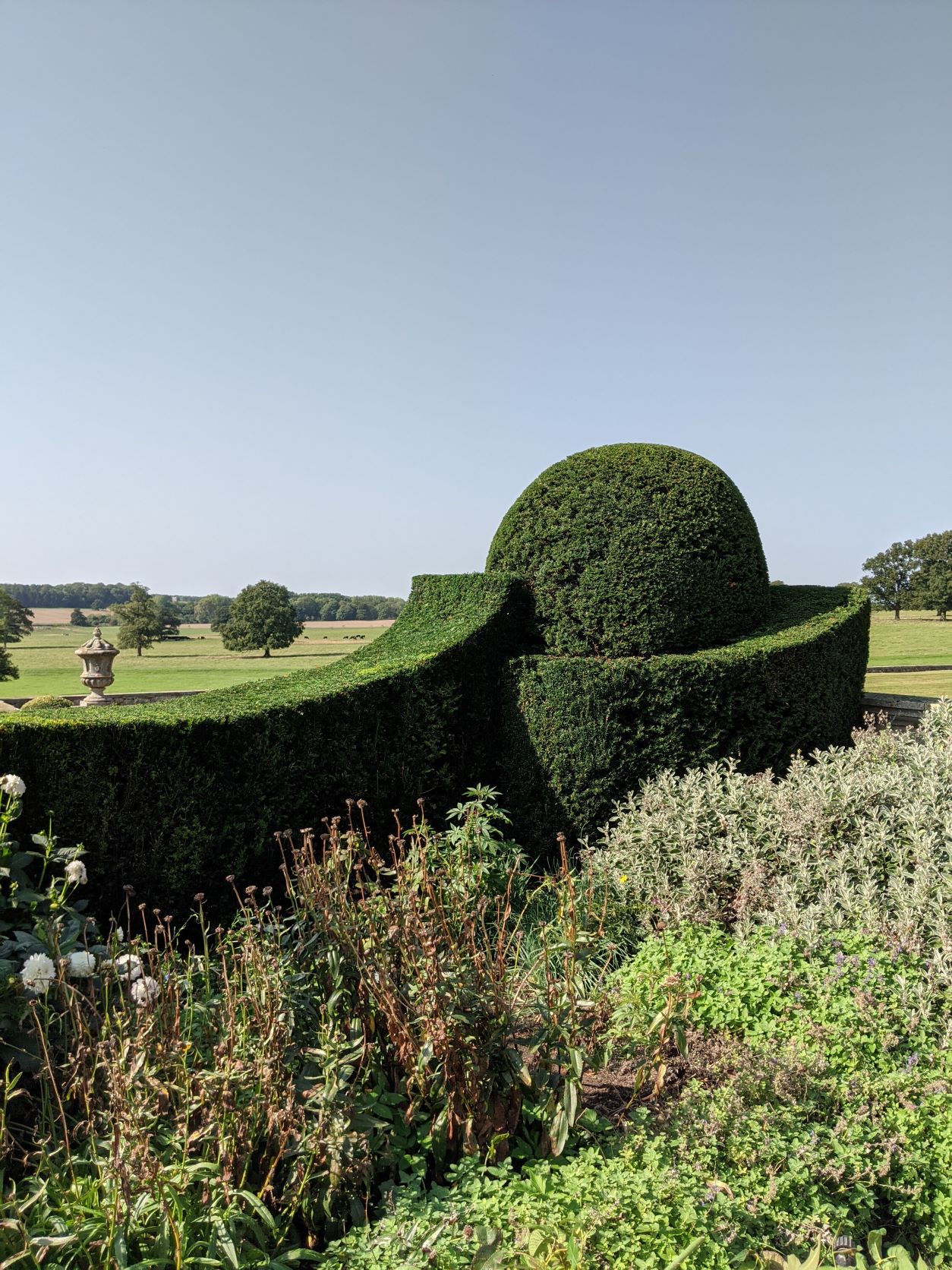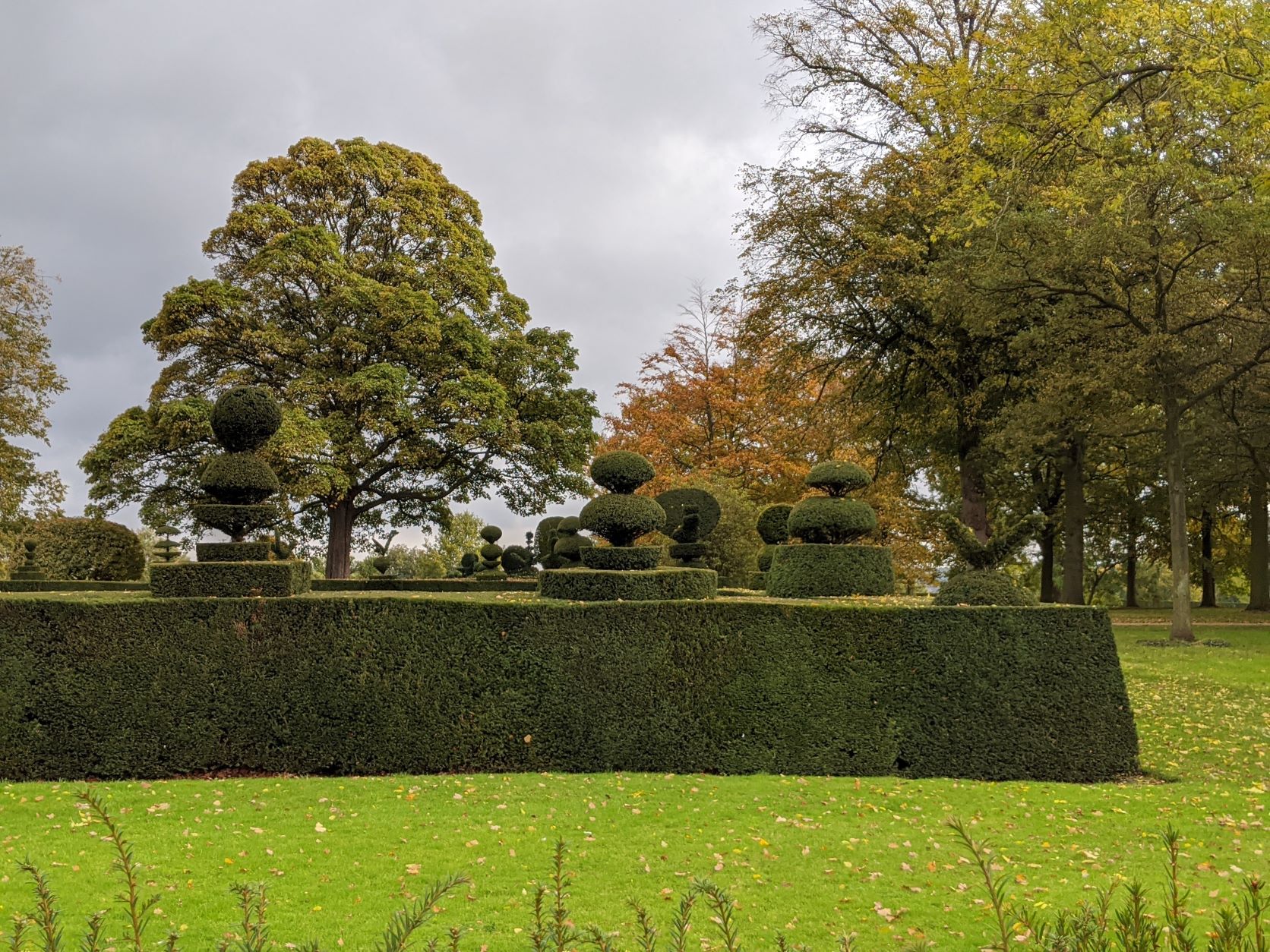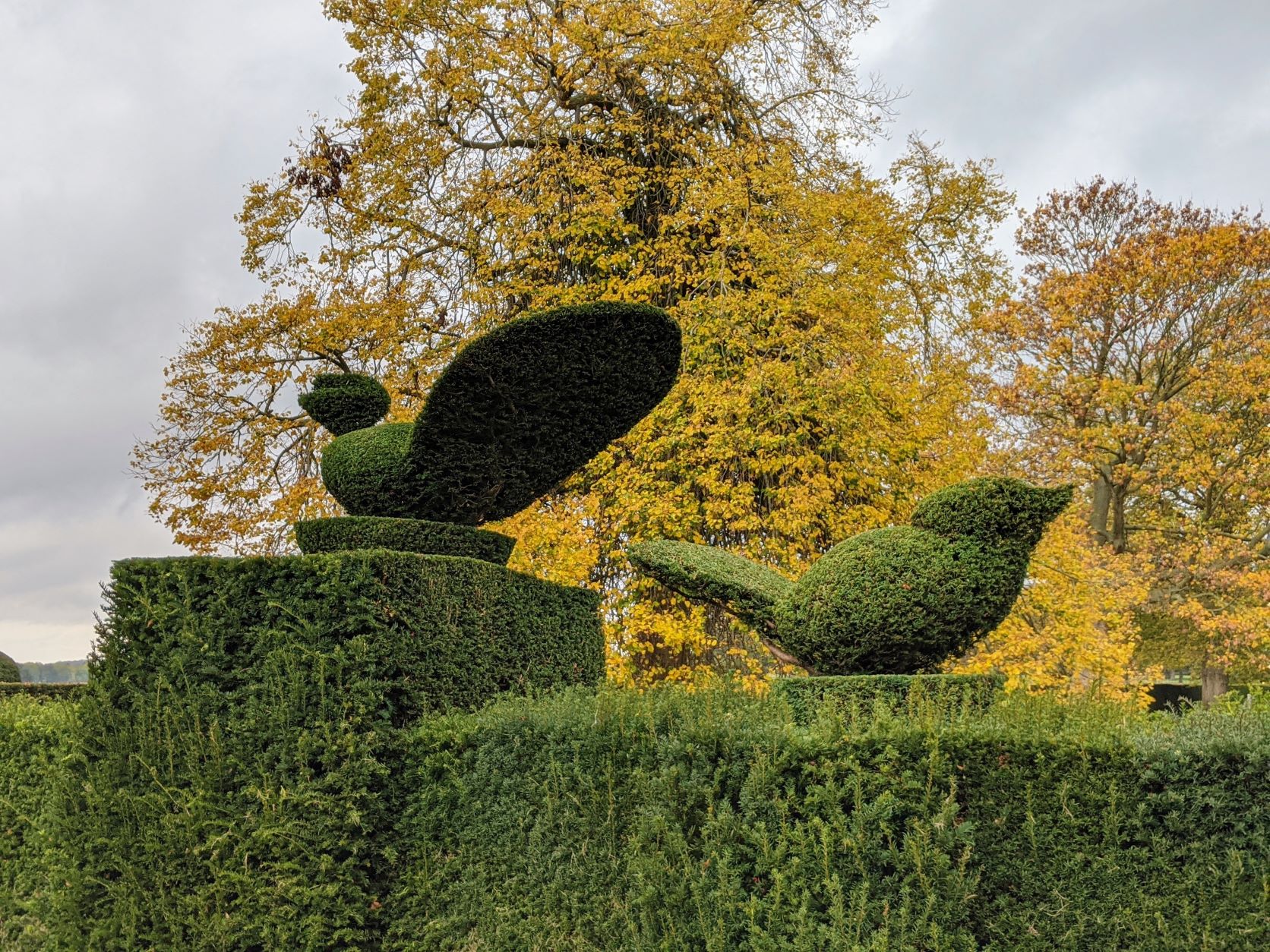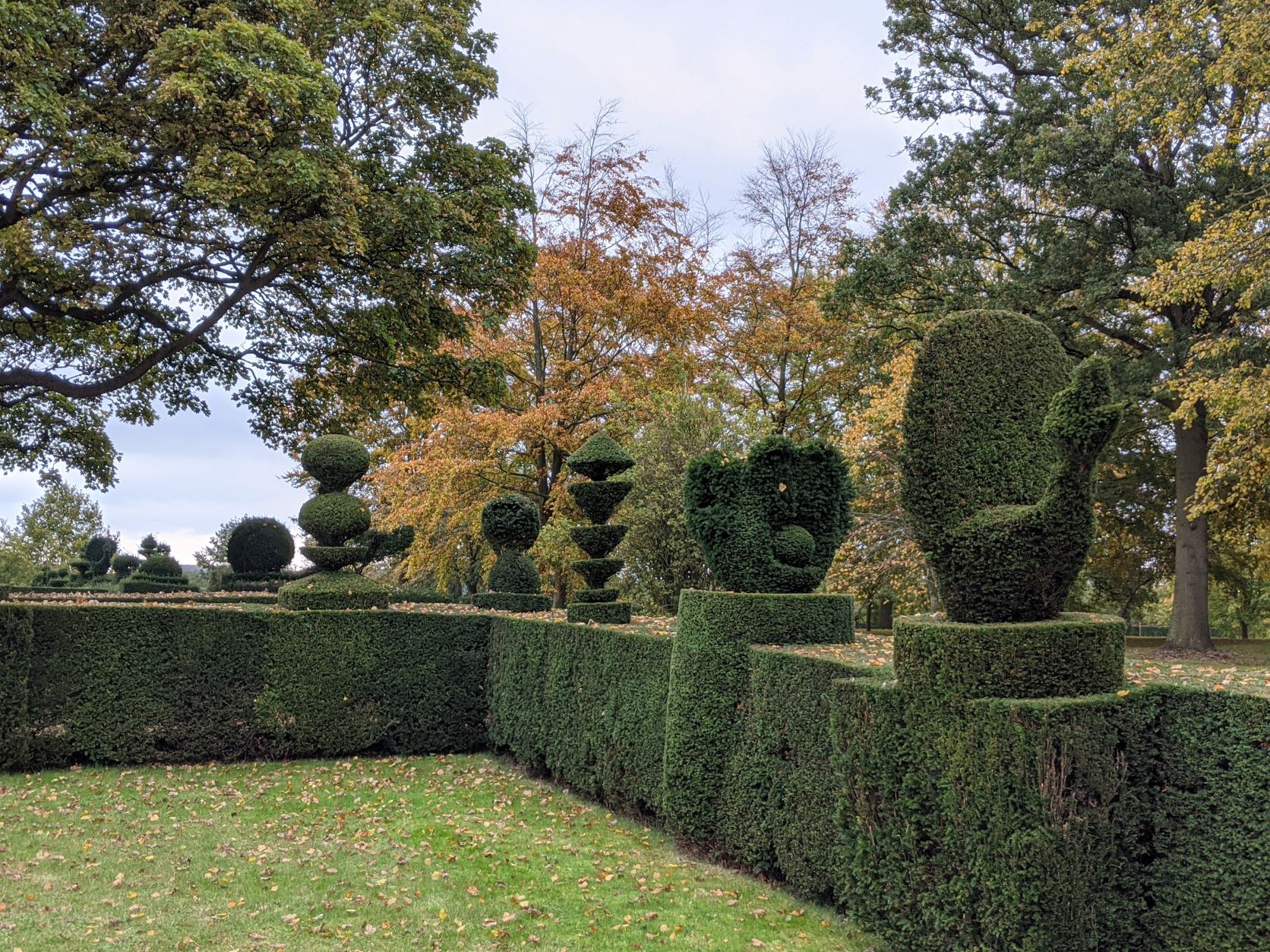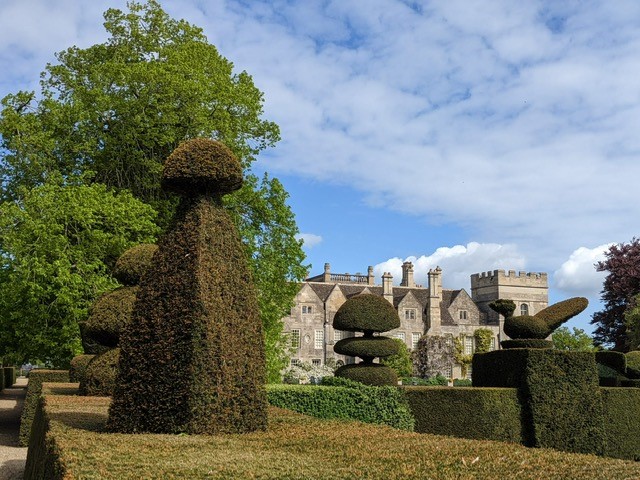TOPIARY AT GRIMSTHORPE TODAY
Topiary, or “living architecture” is one of the most defining features of the Gardens at Grimsthorpe Castle. The South Lawns are adorned by two separate garden rooms known as the Topiary Squares. Here an established collection of topiary birds and shapes perch above a predominantly Yew hedge. The topiary itself has evolved and been added to over the years but its original design dates back to the 1920s making some of the oldest pieces around 100 years old.
Plant species comprise mostly Yew (Taxus baccata) and Box (Buxus sempervirens) both of which are evergreen and provide a permanent structure to the garden year-round.




